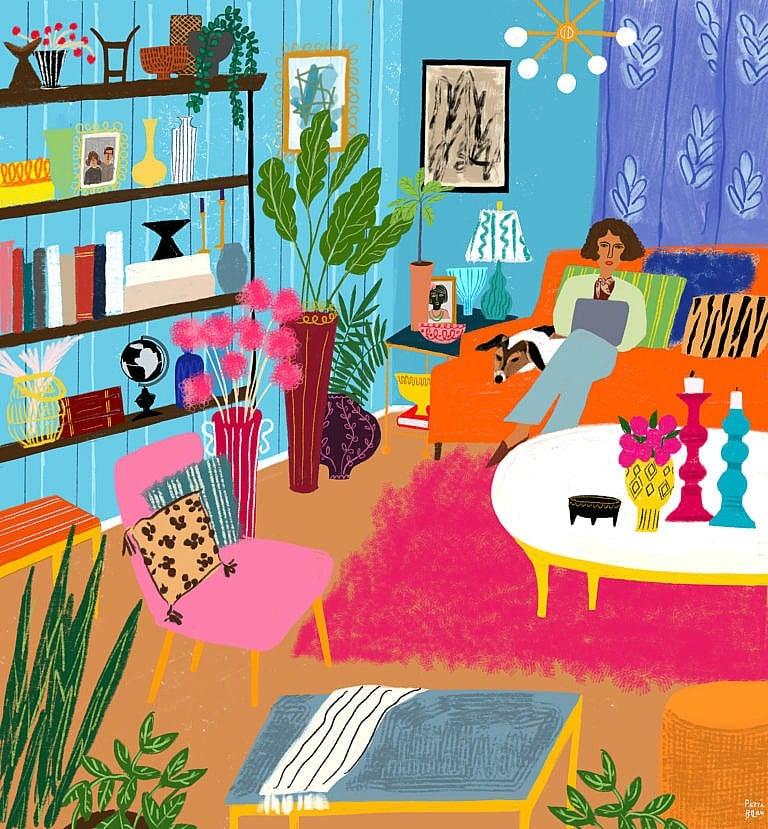The joy of clutter
Surrounding ourselves with things we love is a salve in trying times

(Illustration by Patti Blau)
Share
People have always loved their stuff. Neanderthal hoarders probably packed their caves with shiny stones and fluffy feathers. From the French opulence of Louis XIV in the 17th century to the coziness of British shabby chic at the turn of the 21st, “maximalism”—rooms layered with pattern, colour, art and collectibles—has cycled through the ages. And now it’s back again, after a pandemic that saw much of the world forced to stay home.
Psychologically, craving comfort from our things is a partial outcome of our confinement, says Suzanne Dimma, principal of Suzanne Dimma Design in Toronto. “I think our homes have to deliver a lot of punch now. We’re looking for things with stories that can fill our souls, rather than impress our guests,” she says. “Maximalism is more about personality, expressive energy and creativity.” Staying home shone a light on our spaces, revealing not only how we use them, but how we feel about them. Surrounding yourself with things you love is a powerful type of self-care, and as the pandemic wore on, surround ourselves we did. According to Statistics Canada, sales of home furnishings and furniture spiked to record highs in spring 2021 and have remained elevated ever since, with a 14 per cent increase over 2020. Instagram, in particular, is a fountain of vintage-decor finds as enthusiasts seek out unique pieces with “history.”
READ: The next trend in luxury Canadian real estate? Multi-level ‘iceberg’ basements.
The maximalism we’re seeing today is inspired by several design trends, including the pastoral quality of cottagecore—a romanticization of rural British life that gained prominence on TikTok—as well as the textural lushness of the ’70s. Maximalism is always romantic, never stingy and frequently overwhelming, in the best way. It requires jovial layers of pattern and colour, architectural details like mouldings and other decorative millwork, vintage art and artifacts and a general accumulation of items with personal meaning. This time it’s not glamorous, but cheery and well-loved. It’s the patina on an antique brass pitcher, a portrait found at a garage sale, the wink of whimsical wallpaper. It’s a reaction to the oversaturation of neutrals, minimalism and white space from influencers and shelter mags. “The way interiors are being photographed now is so different,” says Dimma. “There are all these layers in the foreground, such as interesting coffee tables loaded with objects and books. [In the background], you see the sofa with a blanket on the back of it. It’s not clean and flat the way it used to be. It amps up that feeling of warmth, making us feel comforted.”
Maximalists seek out stories, collecting bits of history that make them happy. There’s also an element of slow design—taking your time because you have time—that appeals right now. We’ve been through a collective trauma and are seeking comfort. It’s not really about the stuff; it’s about how stuff makes us feel—and being surrounded by joy is healing.
This article appears in print in the February 2022 issue of Maclean’s magazine with the headline, “The joy of clutter.” Subscribe to the monthly print magazine here.